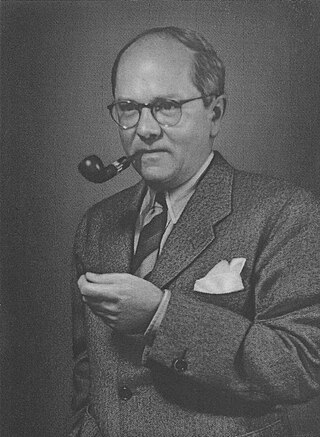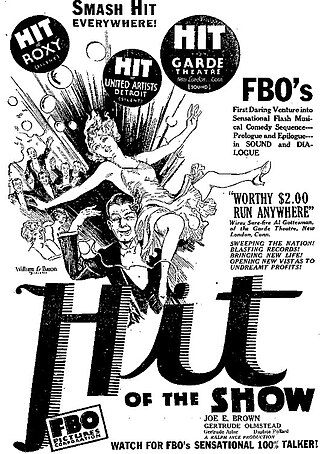
Richard Armstrong Whiting was an American composer of popular songs, including the standards "Hooray for Hollywood", "Ain't We Got Fun?" and "On the Good Ship Lollipop". He also wrote lyrics occasionally, and film scores most notably for the standard "She's Funny That Way".

The Singing Fool is a 1928 American sound part-talkie musical drama motion picture directed by Lloyd Bacon which was released by Warner Bros. In addition to sequences with audible dialogue or talking sequences, the film features a synchronized musical score and sound effects along with English intertitles. The soundtrack was recorded using the Vitaphone sound-on-disc system. The film stars Al Jolson and is a follow-up to his previous film, The Jazz Singer. It is credited with helping to cement the popularity of American films of both sound and the musical genre. The film entered the public domain on January 1, 2024.

The Iron Mask is a 1929 American part-talkie adventure film directed by Allan Dwan. In addition to some sequences with dialogue, the film featured a synchronized musical score with sound effects and a theme song.

Belle Bennett was a stage and screen actress who started her career as a child as a circus performer. She later performed in theater and films.

The Last Performance is a 1929 American sound part-talkie film directed by Paul Fejos and starring Conrad Veidt and Mary Philbin. In addition to sequences with audible dialogue or talking sequences, the film features a synchronized musical score and sound effects along with English intertitles. The soundtrack was recorded using the Western Electric sound-on-film system. The talking sequences were featured on the last reel.

The Show of Shows is a 1929 American pre-Code musical revue film directed by John G. Adolfi and distributed by Warner Bros. The all-talking Vitaphone production cost almost $800,000 and was shot almost entirely in Technicolor.

Say It with Songs is a 1929 American pre-Code musical drama film, directed by Lloyd Bacon and released by Warner Bros. The film stars Al Jolson and Davey Lee and was a follow-up to their previous film, The Singing Fool (1928).

Alma Bennett was an American film actress of the silent era. She appeared in more than 60 films between 1919 and 1931.

My Man is a 1928 black and white sound part-talkie American comedy-drama musical film directed by Archie Mayo starring Fanny Brice and featuring Guinn "Big Boy" Williams. In addition to sequences with audible dialogue or talking sequences, the film features a synchronized musical score and sound effects along with English intertitles. The soundtrack was recorded using the Vitaphone sound-on-disc system.

Seven Footprints to Satan is a sound part-talkie 1929 American mystery film directed by Danish filmmaker Benjamin Christensen. Based on the 1928 story of the same name by Abraham Merritt, it stars Thelma Todd, Creighton Hale, William V. Mong and Sheldon Lewis. In addition to sequences with audible dialogue or talking sequences, the film features a synchronized musical score and sound effects along with English intertitles. The film survives at the Cineteca Italiana in an alternate sound version known as an International Sound Version. The sound disks for this foreign sound version are apparently not extant.

She Goes to War is a 1929 sound part-talkie directed by Henry King and starring Eleanor Boardman. In addition to sequences with audible dialogue or talking sequences, the film features a synchronized musical score and sound effects along with English intertitles. The soundtrack was recorded using the RCA Photophone sound-on-film system. The film was released a year after Boardman had starred in The Crowd.
House of Horror is a 1929 American sound part-talkie comedy mystery film directed by Benjamin Christensen. In addition to sequences with audible dialogue or talking sequences, the film features a synchronized musical score and sound effects along with English intertitles. The soundtrack was recorded using the Vitaphone sound-on-disc system. The film stars Louise Fazenda and Chester Conklin. The film portion of the House of Horror is now presumed lost while the sound survives on Vitaphone discs.

Lucky Boy is a 1929 American sound part-talkie musical comedy-drama film directed by Norman Taurog and Charles C. Wilson, most notable for starring George Jessel in his first known surviving feature picture. In addition to sequences with audible dialogue or talking sequences, the film features a synchronized musical score, singing and sound effects along with English intertitles. The sound was recorded using the Tiffany-Tone system using RCA Photophone equipment. The film's plot bore strong similarities to that of the hit 1927 film The Jazz Singer, which had originally been intended to star Jessel before Al Jolson took over the role.

The Wagon Master is a 1929 American sound part-talkie Western sound film starring Ken Maynard, directed by Harry Joe Brown, and written by Marion Jackson and Leslie Mason. In addition to sequences with audible dialogue or talking sequences, the film features a synchronized musical score and sound effects along with English intertitles. The soundtrack was recorded using the Western Electric sound-on-film system. The film was edited by Fred Allen and the cinematographer was Ted D. McCord. Maynard's character in the film was referred to as "the Rambler." There is a whip fight in this kinetic film. Maynard is believed to have been the first onscreen "Singing Cowboy" in this movie, succeeded by John Wayne as "Singin' Sandy" Saunders in Riders of Destiny (1933) and Gene Autry after Wayne eventually declined to flourish a dubbed singing voice in future endeavors; Autry "auditioned" for the mantle in the 1934 film In Old Santa Fe, starring Maynard.

Hit of the Show is a 1928 American sound part-talkie comedy film directed by Ralph Ince and starring Joe E. Brown, Gertrude Olmstead and William Bailey. In addition to sequences with audible dialogue or talking sequences, the film features a synchronized musical score and sound effects along with English intertitles. The soundtrack was recorded using the RCA Photophone sound-on-film system.

Molly and Me is a 1929 sound part-talkie American comedy film directed by Albert Ray. In addition to sequences with audible dialogue or talking sequences, the film features a synchronized musical score and sound effects along with English intertitles. The soundtrack was recorded using the Tiffany-Tone sound system. The film stars Belle Bennett, Joe E. Brown and Alberta Vaughn.

Two Men and a Maid is a 1929 American sound part-talkie romantic drama film directed by George Archainbaud and starring William Collier Jr., Alma Bennett and Eddie Gribbon. In addition to sequences with audible dialogue or talking sequences, the film features a synchronized musical score and sound effects along with English intertitles. The soundtrack was recorded using the Tiffany-Tone sound-on-film system using RCA Photophone equipment.

New Orleans is a 1929 American sound part-talkie drama film directed by Reginald Barker and starring Ricardo Cortez, William Collier Jr., Alma Bennett. In addition to sequences with audible dialogue or talking sequences, the film features a synchronized musical score and sound effects along with English intertitles. The soundtrack was recorded using the Tiffany-Tone sound-on-film system using RCA Photophone equipment. The film was produced and distributed by the independent Tiffany Pictures.

Midstream is a 1929 American sound part-talkie science fiction film directed by James Flood and starring Ricardo Cortez, Claire Windsor, and Montagu Love. In addition to sequences with audible dialogue or talking sequences, the film features a synchronized musical score and sound effects along with English intertitles. The soundtrack was recorded using the Tiffany-Tone sound-on-film system using RCA Photophone equipment.

Whispering Winds is a 1929 American sound part-talkie pre-Code drama film directed by James Flood and starring Patsy Ruth Miller, Malcolm McGregor and Eve Southern. In addition to sequences with audible dialogue or talking sequences, the film features a synchronized musical score and sound effects along with English intertitles. The soundtrack was recorded using the Tiffany-Tone sound-on-film system using RCA Photophone equipment.



















